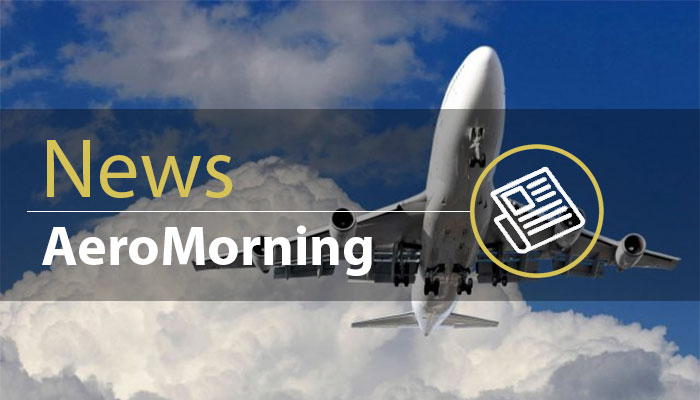Istanbul – The International Air Transport Association (IATA) announced an expected strengthening of airline industry profitability in an upgrade of its outlook for 2023. Highlights include:
• Airline industry net profits are expected to reach $9.8 billion in 2023 (1.2% net profit margin) which is more than double the previous forecast of $4.7 billion (December 2022).
• Airline industry operating profits are expected to reach $22.4 billion in 2023, much improved over the December forecast of a $3.2 billion operating profit. It is also more than double the $10.1 billion operating profit estimated for 2022.
• Some 4.35 billion people are expected to travel in 2023, which is closing in on the 4.54 billion who flew in 2019.
• Cargo volumes are expected to be 57.8 million tonnes, which has slipped below the 61.5 million tonnes carried in 2019 with a sharp slowing of international trade volumes.
• Total revenues are expected to grow 9.7% year over year to $803 billion. This is the first time that industry revenues will top the $800 billion mark since 2019 ($838 billion). Expense growth is expected to be contained to an 8.1% annual increase.
“Airline financial performance in 2023 is beating expectations. Stronger profitability is supported by several positive developments. China lifted COVID-19 restrictions earlier in the year than anticipated. Cargo revenues remain above pre-pandemic levels even though volumes have not. And, on the cost side, there is some relief. Jet fuel prices, although still high, have moderated over the first half of the year,” said Willie Walsh, IATA’s Director General.
The return to net profitability, even with a 1.2% net profit margin, is a major achievement. First, it was achieved at a time of significant economic uncertainties. And second, it follows the deepest losses in aviation’s history ($183.3 billion of net losses for 2020-2022 (inclusive) for an average net profit margin of -11.3% over that period). It should be noted that the airline industry entered the COVID-19 crisis at the end of a historic profit streak that saw an average net profit margin of 4.2% for the 2015-2019 period.
“Economic uncertainties have not dampened the desire to travel, even as ticket prices absorbed elevated fuel costs. After deep COVID-19 losses, even a net profit margin of 1.2% is something to celebrate! But with airlines just making $2.25 per passenger on average, repairing damaged balance sheets and providing investors with sustainable returns on their capital will continue to be a challenge for many airlines,” said Walsh.
Outlook Drivers
Revenues are rising (9.7%) faster than expenses (8.1%), strengthening profitability.
Revenue: Industry revenues are expected to reach $803 billion in 2023 (+9.7% on 2022 and -4.1% on 2019). An inventory of 34.4 million flights is expected to be available in 2023 (+24.4% on 2022, -11.5% on 2019).
• Passenger revenues are expected to reach $546 billion (+27% on 2022, -10% on 2019). With COVID-19 restrictions now removed in all major markets, the industry is expected to reach 87.8% of 2019 levels of revenue passenger kilometers (RPKs) for the year with strengthening passenger traffic as the year progresses. The high demand for travel in many markets is keeping yields strong with a modest 1.1% decline expected in 2023 compared to 2022 levels (following increases of 9.8% in 2022 and 3.7% in 2021).
Efficiency levels are high with an expected average passenger load factor of 80.9% for 2023. That is very near the 2019 record performance of 82.6%.
IATA’s May 2023 passenger polling data supports the optimistic outlook, with 41% of travelers indicating they expect to travel more in the next 12 months than in the previous year and 49% expect to undertake the same level of travel. Moreover, 77% of respondents indicated that they were already traveling as much or more than they did pre-pandemic.
• Cargo revenues are expected to be $142.3 billion. While that is down sharply from $210 billion in 2021 and $207 billion in 2022, it is well above the $100 billion earned in 2019. Yields will be negatively impacted by two factors: (1) the ramping-up of passenger capacity which automatically increases available belly capacity for cargo and (2) the potential negative effects on international trade of economic cooling measures introduced to fight inflation. Yields are expected to correct with a 28.6% decline this year, but still remain high by all historical comparisons. Note that yield increases of 54.7% were recorded in 2020, 25.9% in 2021 and 7.4% in 2022.
Expenses are expected to grow to $781 billion (+8.1% on 2022 and -1.8% on 2019).
• Jet fuel costs are expected to average $98.5/barrel in 2023 for a total fuel bill of $215 billion. That is cheaper than the $111.9 / barrel previously expected (December 2022) and the average cost of $135.6 experienced in 2022.
High crude oil prices were exaggerated for airlines as the crack spread (premium paid to refine crude oil into jet fuel) averaged more than 34% for 2022—significantly above the long-run average. As a result, fuel was responsible for almost 30% of total expenses. In recent months, the crack spread has narrowed, and the full year average crack spread is expected to fall to around 23%, which is more closely aligned with the historical average rate. Fuel costs will account for 28% of the average cost structure, which is still above the 24% of 2019.
• Non-Fuel expenses have been controlled well by airlines despite inflationary pressures. With fixed costs being distributed over a larger scale of activity, non-fuel unit costs per available tonne kilometre (ATK) are expected to fall to 39 cents per ATK. That is -6.4% compared to 2022 (41.7 cents /ATK) and marks a return to about pre-COVID levels. Total non-fuel costs are expected to reach $565 billion in 2023.
Risks
The economic and geopolitical environment presents several risks to the outlook. With just $22.4 billion of operating profit (2.8%) standing between $803 billion of revenues and $781 billion in expenses, industry profitability is fragile and could be affected (positively or negatively) by a number of factors. In particular, consideration should be given to:
• Inflation fighting measures are maturing at different rates in different markets. Central banks are calibrating the best levels for interest rates to have a maximum cooling effect on inflation while avoiding tipping economies into recession. An early or lower end to rate rises could stimulate markets for a stronger year-end outlook. Equally, the risk of recession remains. Should recession lead to job losses, the industry’s outlook could shift negatively.
• War in Ukraine is not having a major impact on profitability for most airlines. A currently unanticipated peace could carry the potential for cost improvements with lower oil prices and efficiencies from the removal or easing of airspace restrictions. An escalation, however, would likely have negative prospects for global aviation. Already broader geopolitical tensions are weighing upon international trade and any escalation of such tensions represents a downside risk to the industry outlook.
• Supply chain issues continue to impact global trade and business. Supply chains are shifting to fill gaps in resilience caused by current geopolitical tensions and the challenges experienced during COVID-19. Airlines have been directly impacted by aircraft parts supply chain ruptures which aircraft and engine manufacturers have failed to sort out. This is negatively impacting the delivery of new aircraft and the ability of airlines to maintain and deploy existing fleets.
• Regulatory cost burdens are at risk of increase from increasingly interventionist regulators. In particular, the industry could face rising costs of compliance for increasingly punitive passenger rights regimes and regional environment initiatives.
Regional Round Up
While the global airline industry is expected to return to profitability in 2023, financial performance across regions remains diverse. The positive news is that industry financials are improving in all regions from the COVID-related depths of 2020, although not all regions are expected to deliver a profit this year.
North American Carriers

North America remains the standout region in terms of financial performance. Consumer spending has remained solid, despite cost-of-living pressures, and the demand for air travel remains robust; air passenger demand is forecast to exceed its pre-COVID (2019) level this year.
European Carriers

Notwithstanding the various capacity constraints experienced over the summer period, European carriers were able to return to profit in 2022. That profitability will strengthen further in 2023. The key regional risks relate to the war in Ukraine, labor unrest and concerns about economic performance in some key countries.
Asia-Pacific Carriers

Now that all economies in the region have lifted COVID travel restrictions, the industry recovery is underway. A sharp rise in both passenger volumes and capacity is expected to be reflected in a sizeable improvement in 2023 financial results and a narrowing of the gap to other regions.
Middle East Carriers

The region’s return to profitability in 2022 was supported by a significant increase in the passenger load factor of almost 25 percentage points, outstripping the performance of the other regions. At the same time, Middle East carriers have been swiftly rebuilding their international networks and in March 2023, the region’s international connectivity had returned to 98% of its pre-COVID level.
Latin American Carriers

Passenger volumes are recovering quickly, but the financial performance varies considerably across the region. The region will remain in the red, although some airlines are expected to post solid profits. Overall, industry financial performance is expected to continue to improve, but a challenging economic backdrop in a number of countries in the region is dampening the pace of recovery.
African Carriers

Africa remains a difficult market in which to operate an airline, with economic, infrastructure and connectivity challenges impacting the industry performance. Nonetheless, despite these challenges, there is still robust demand for air travel in the region which underpins the continued move towards a return to overall industry profitability.
2022
The improvement in industry financial performance in 2022 outpaced previous expectations. Net industry losses for 2022 are now estimated to be -$3.6 billion, a strengthening from the previously estimated -$6.9 billion loss (December 2022). At the operating level, and notwithstanding the wide variation in performance, the latest data point to the industry having returned to profit in 2022 on a pre-tax basis.
Bottom Line
“Resilience is the story of the day and there are many good reasons for optimism. Achieving profitability at an industry level after the depths of the COVID-19 crisis opens up much potential for airlines to reward investors, fund sustainability, and invest in efficiencies to connect the world even more effectively. That’s a big ‘to do’ list to achieve with just a 1.2% net profit margin. That’s why we call on governments to keep their focus on initiatives that will strengthen safe, sustainable, efficient, and profitable connectivity,” said Walsh.
“Priorities for 2023 include SAF production incentives to accelerate progress toward net zero carbon emissions, ensuring the integrity of CORSIA as the economic measure applied to international aviation, eliminating inefficiencies in air traffic management and applying global standards consistently,” said Walsh.
Passengers are counting on a safe, sustainable, efficient and profitable airline industry. A recent IATA poll of travelers in 11 global markets revealed that 81% of those surveyed emerged from the pandemic with a greater appreciation of the freedom that flying makes possible. The same study also demonstrated the important role that travelers see the airline industry playing:
• 90% said that connectivity by air is critical to the economy
• 91% said that air travel is a necessity for modern life
• 88% said that air travel has a positive impact on societies
• 82% said that the global air transport network is a key contributor to the UN Sustainable Development Goals (SDGs)
• 96% expressed satisfaction with their last flight, and
• 77% said that flying was good value for money.
Source : IATA Corporate Communications










Be the first to comment on "Airline Profitability Outlook Strengthens"